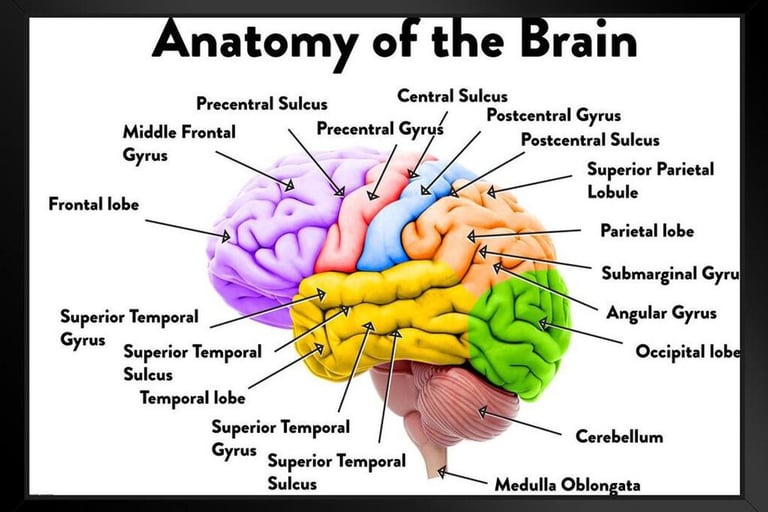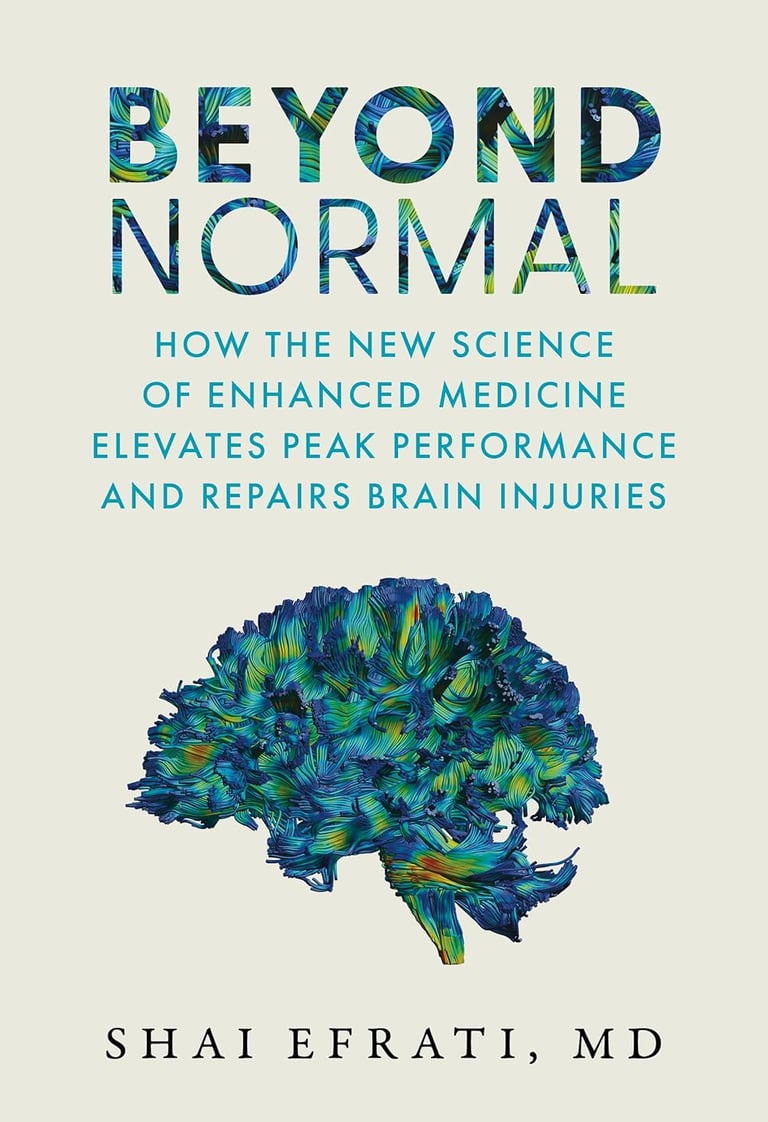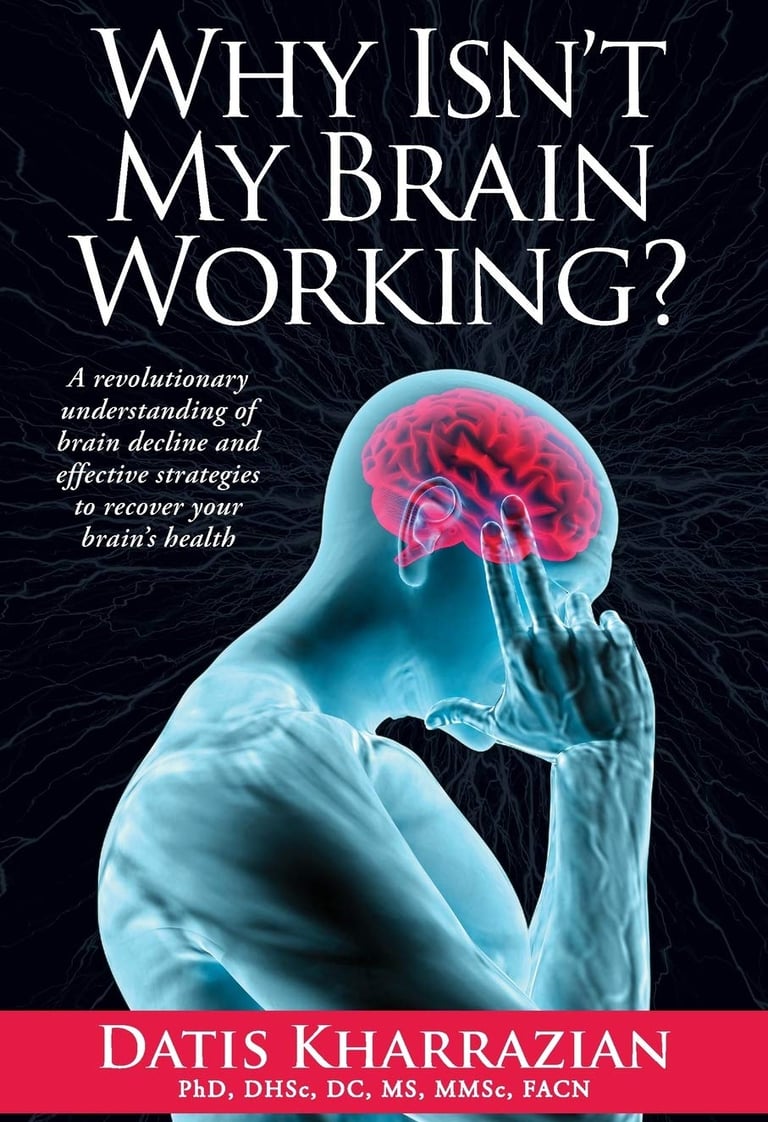WARNING: This website contains facts and opinions some may find offensive...
THE BRAIN


Are you losing your memory? Can't focus or concentrate? Shrouded in brain fog? Do you tire easily? Have you lost your motivation or zest for life? Have people told you there is nothing wrong with you or you are just getting older? If so, your brain may be growing old too fast, or degenerating. Modern diets, a stressful lifestyle, and environmental toxins all take their toll on the brain. The destruction sets in years or even decades before Alzheimer's, Parkinson's, multiple sclerosis, or other serious neurological diseases can be diagnosed. Learn how to spot brain degeneration and stop it before it's too late.
This doesn't just happen to seniors—brain disorders and degeneration are on the rise for young and old alike. The good news is the brain is extremely adaptable and wants to get well. You simply have to know how to feed and care for your brain.
THE BRAIN AS A TISSUE
The human brain contains an estimated 90 billion neurons, the cells that orchestrate and monitor communications in our body’s central nervous system. Scientists estimate that the Milky Way galaxy may have the same number of stars as we have neurons in our brain. Neurons become active by passing signals to each other via intricate connections called synapses; our brain has an estimated 100 trillion synaptic connections. They transmit the signals in an electrical and chemical network that extends from the more sophisticated neurons in the brain, the cortical pyramidal cells, to neurons, muscles, and organs everywhere else in the body.
The outer layer of the brain, the cortex, is the largest and most complex of any species in homo sapiens and became our single biggest advantage over all other species on Earth. Our brains could not have developed far beyond other animals today if our predecessors had not learned how to control fire and cook food.
That ingenious step enabled us to divert energy once consumed in digesting raw food to expanding the cortex. Further evolutionary pressures—such as social interactions and organizational activities involved in obtaining the food—led to the development of larger brains. Across the millennia of evolution, homo sapiens became rulers of this planet. Our large brain gave us the capacity to think abstractly, to communicate and organize, to imagine and prepare for a better future.
Our superior brains enable us to frame—and answer—basic questions such as: How can we avoid dangers, preserve life, and improve our living conditions? How can we adapt raw materials in the Earth’s crust to create and master new technologies?
Homo sapiens use only 8 – 15% of our total energy consumption for digestion, in contrast to most animals, whose digestion burns two times as much and more. Every day, we burn more calories thinking (340 calories, on average) than we do during an hour of light gardening, a leisurely bike ride of forty-five minutes, or running at a pace of ten minutes per mile for half an hour.
Yet, most of us are using only 5 to 10% of our maximal brain capacity because we don’t have enough oxygen to fuel more neuron activity. At any given moment, the brain is using all the oxygen available in its blood supply. It must set priorities: to deliver more oxygen to those regions that are essential for the specific task or tasks needed at that moment. The less essential regions at that moment, in effect, are put on standby.
Our brains are oxygen-deprived even under normal healthy conditions. When we have a brain injury, our brains naturally respond by delivering more of the available oxygen to repair the damage in those areas of the brain at the expense of what are now more areas of the brain that—as a result of the injury—have less claim on the available blood supply. It is only logical then that increasing blood flows can improve performance in healthy brains and accelerate healing in injured areas of the brain.
MORE OXYGEN, MORE METABOLISM, MORE BRAIN POWER
Brain capacity is a major, if not a dominant, factor in how well we prosper relative to others in a given society. There has been a threefold increase in brain size in a mere 2.5 million years. With each new generation, remarkable as it may seem, the human cortex continues to expand, leading to ever higher cognitive potential.
Hyperbaric Oxygen Therapy—specifically, the hyperoxic-hypoxic paradox (HHP) promotes healing for myriad brain injuries. HHP can dramatically increase the volume of oxygen available to convert into what we consider the fuel of the cell—adenosine triphosphate (ATP). In brain tissue, this biochemical response is critical in areas being deprived of oxygen.
The volume of oxygen available for the chemical work of thinking is the principal factor limiting our capacity to put the increasing brain power of humans to work. Oxygen-rich hemoglobin and freely dissolved oxygen are transported from our beating hearts through the large carotid arteries on each side of our neck and arteries along the vertebrae in the back of our neck. If we were able to get higher volumes of oxygen into the tissues of the expanding cortex, how much would the capacity of our brain power increase?
The brain carries oxygen and energy to where it is needed the most at any given moment. Each time we trigger a thought or action, our brain responds in this way. It directs more oxygen through cerebral blood flow into a specific area of the cortex to execute that thought.
The mental prompt to bend and straighten the knees to perform a plie in ballet initially stimulates the supplementary motor cortex, which is responsible for planning the movement. Recalling a dinner guest’s favorite dessert before they arrive activates the region of the hippocampus responsible for specific memory tasks. We call these specific cerebral destinations areas of preference. They are priorities framed by our biochemistry for oxygen delivery.
As the cells in our brain wear out (degeneration) these aging cells are replaced by fresh new cells (regeneration) all the time, just like the skin, bones, and other tissues in our bodies. We regenerate these neurons, blood vessels, and glial cells (support cells) that wear down as time passes and our bodies age chronologically. This balance between regeneration and degeneration determines the amount of active tissue in our brain.
We can see this balance between regeneration and degeneration in our skin, but it is also is ongoing in other organs. For example, the full regeneration of cells in bones may take seven to ten years, but eventually, all cells in our bones are replaced. In the brain, it takes at least six months for new neurons to mature.
The balance shifts toward more degeneration than regeneration as we age chronologically. By the time we are in our forties, our natural physical capabilities have begun to fade as we lose some muscle tissue throughout the body (sarcopenia) and bone mass (osteoporosis). People typically lose 1% of their bone mass every year after their fortieth birthday, a natural setback that can be much worse if you drink sugary or diet sodas; do little or no regular weight-bearing exercise (lifting weights, rebounding, or yoga), running, or even walking; or have an overactive thyroid. A similar decline after age forty happens in brain functions.
BRAIN CELLS REGENERATE ALL THE TIME
Some twenty, or so, years ago, medical schools taught that neurons cannot be regenerated. The existence of neural stem cells was not known. That gap in understanding our brains’ physiology persuaded physicians to prescribe and pharmaceutical companies to develop, therapies and drugs targeting specific functions of neuronal cells. Medications that target enzymes and neurotransmitters originating in neurons flowed into physicians’ pharmaceutical cabinets.
Starting in the late 1990s, researchers found that the hippocampus continues to create new cells without the constraint of age or time. As hippocampus cells die, they are quickly replaced by new ones. Today we know that damaged neurons can be regenerated and replaced by new ones, a treatment far superior to prescribing drugs targeting a specific enzyme. This is why we should aim for regeneration in treating brain injuries or disease; we should aim to repair tissue rather than relieve symptoms.
COVID INJECTIONS CAUSING A NEW FORM OF RAPID-ONSET DEMENTIA
The late Dr. Luc Montagnier, a Nobel Prize-winning virologist, whose final research paper highlighted a terrifying link: the original spike protein contains amino acids that code for PRION DISEASE.
This prion-like mechanism is implicated in causing:
Protein deformations
Amyloid plaque formation in the brain
A “reservoir” of spike protein in the brain that evades normal treatments
The result? Patients are presenting with rapid, atypical neurological decline that conventional doctors misdiagnose as standard dementia, Parkinson’s, or ALS. But the cases don’t fit the classic patterns. Here’s the HOPE that the medical establishment isn’t offering:
A patient referred to palliative care. As a last resort, they tried N-Acetylcysteine (NAC) to cross the blood-brain barrier and clear the spike. In just 3 WEEKS, she regained the ability to walk, feed herself, and even returned to gardening. When you treat the root pathology—the spike protein (snake protein) and its microvascular damage—instead of just the symptoms, over 50% of these “hopeless” patients see significant recovery. The takeaway is urgent:
The system is failing these patients by forcing them into a diagnostic box with no hope. A new paradigm of treatment, focused on the true mechanism of injury, is not just possible—it’s saving lives. This is the conversation they don’t want you to have.
TRAUMATIC BRAIN INJURY
Traumatic brain injury (TBI) has become a major public health concern globally for both civilian and military populations, with at least ten million new head injuries occurring annually. It is a leading cause of death and disability in the United States, with an estimated average of 1.4 million cases per year; of these, 50,000 will not survive a severe TBI, 235,000 will be hospitalized, and another and the remaining 1.1 million will be treated and discharged from emergency departments. Less severe but still dangerous, concussions are more prevalent, typically stemming from motor vehicle accidents (50%), falls (38%), sports injuries, and violence, including attempted suicide. There are no accurate statistics on mild TBI because most people with this concussion injury don’t go to a hospital, and 25% of those who do are never reevaluated beyond the time of the injury. About 2% of the population are living with long-term disabilities resulting from TBI.
Brain regions with reduced blood/oxygen supply and diminished metabolism can recover much of their lost potency through hyperbaric oxygen therapy (HBOT). HBOT proved to be as beneficial for children with persistent post concussion syndrome (PPCS) as well as for adults. Leaving the condition untreated puts the child at a significant disadvantage and directly impacts their whole life course.




Contact Us!
TuberoseHealing@protonmail.com
(727) 233-2978
Subscribe to our website.

